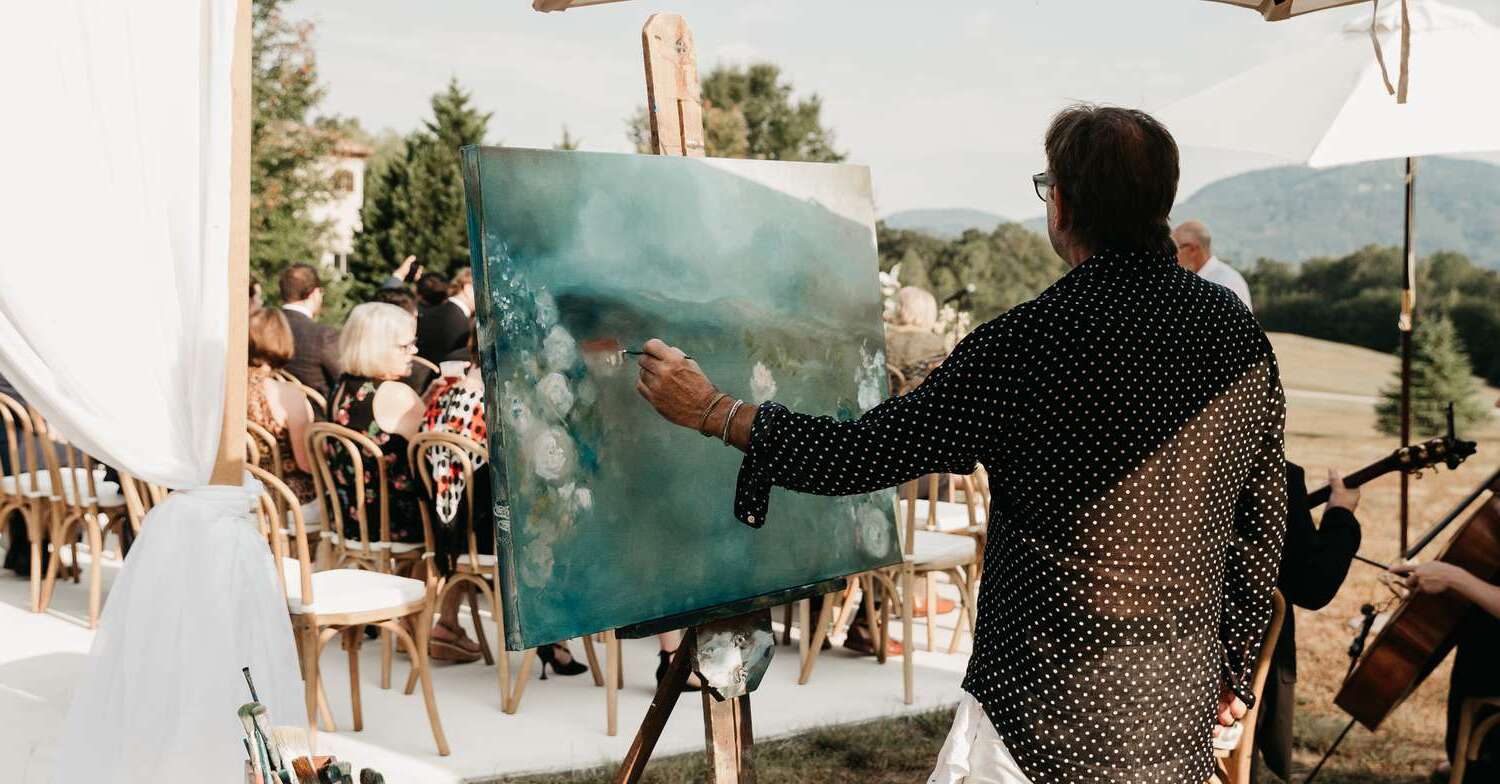
Live painting is a mesmerizing blend of performance and visual art where artists create their masterpieces in real-time, often in front of an audience. But what makes live painting so captivating? It's the thrill of watching creativity unfold right before your eyes. From street corners to art festivals, live painting brings a unique energy that static galleries can't match. Artists feed off the crowd's reactions, making each piece a one-of-a-kind experience. Whether it's a mural on a city wall or a canvas at a music festival, live painting transforms spaces and engages communities. Ready to dive into some intriguing facts about this dynamic art form? Let's get started!
Key Takeaways:
- Live painting is an exciting art form where artists create in real-time, often in front of an audience. It can happen at concerts, festivals, and galleries, and even incorporate performance art and digital tools.
- Live painting has a rich history, from ancient cave paintings to modern street art. It offers a variety of techniques and styles, including abstract, portrait, landscape, mixed media, and collaborative painting. It has also influenced the art world by making art more interactive, reaching global audiences through social media, and even being used in art therapy programs.
What is Live Painting?
Live painting is an art form where artists create their work in real-time, often in front of an audience. This dynamic process can be mesmerizing to watch and offers a unique glimpse into the artist's creative journey.
- Live painting can take place at various events, including concerts, festivals, and galleries.
- Artists often use acrylics or oils for their live paintings due to their versatility and drying times.
- Speed painting is a popular form of live painting where artists complete their work within a limited time frame.
- Some live painters incorporate performance art, blending painting with dance or music.
- Digital live painting is gaining popularity, where artists use tablets and digital tools to create their work.
History of Live Painting
The roots of live painting can be traced back to ancient times, but it has evolved significantly over the years. Understanding its history helps appreciate its current forms.
- Cave paintings are considered one of the earliest forms of live painting, where artists created images in real-time.
- During the Renaissance, artists like Leonardo da Vinci often painted in public spaces.
- The Impressionist movement saw artists like Monet painting outdoors, capturing scenes as they unfolded.
- Street art and graffiti in the 20th century brought live painting to urban environments.
- The 1960s and 70s saw a surge in live painting at music festivals and cultural events.
Techniques and Styles
Live painting encompasses a variety of techniques and styles, each bringing something unique to the table. Artists often experiment to find what works best for them.
- Abstract live painting focuses on shapes, colors, and forms rather than realistic depictions.
- Portrait live painting involves creating lifelike representations of people in real-time.
- Landscape live painting captures natural scenes, often done outdoors.
- Mixed media live painting combines different materials like paint, fabric, and found objects.
- Collaborative live painting involves multiple artists working on a single piece simultaneously.
Famous Live Painters
Several artists have made a name for themselves through live painting, captivating audiences with their skills and creativity.
- Jean-Michel Basquiat started as a street artist and often painted live at events.
- David Garibaldi is known for his high-energy performances and speed painting.
- Alexa Meade creates live paintings that blur the line between two-dimensional and three-dimensional art.
- Denny Dent was famous for his "Two-Fisted Art Attack" performances, painting with both hands.
- Erik Wahl combines live painting with motivational speaking, creating inspiring experiences.
Impact on the Art World
Live painting has significantly influenced the art world, offering new ways for artists to engage with their audience and pushing the boundaries of traditional art forms.
- Interactive experiences allow audiences to participate in the creation process, making art more accessible.
- Social media has amplified the reach of live painting, with artists streaming their work to global audiences.
- Art therapy programs use live painting to help individuals express emotions and improve mental health.
The Magic of Live Painting
Live painting brings a unique blend of spontaneity and creativity. Watching an artist transform a blank canvas into a masterpiece right before your eyes is truly mesmerizing. This art form not only showcases the painter's skill but also engages the audience in a way that static art can't. The interaction between the artist and viewers adds a dynamic element, making each performance unique.
Whether it's at a festival, a gallery, or a street corner, live painting captivates and inspires. It breaks down barriers, making art accessible to everyone. The immediacy of the process, the raw emotion, and the evolving creation all contribute to an unforgettable experience.
Next time you see a live painter, take a moment to appreciate the magic unfolding. It's a reminder of the power of creativity and the beauty of art in motion.
Frequently Asked Questions
Was this page helpful?
Our commitment to delivering trustworthy and engaging content is at the heart of what we do. Each fact on our site is contributed by real users like you, bringing a wealth of diverse insights and information. To ensure the highest standards of accuracy and reliability, our dedicated editors meticulously review each submission. This process guarantees that the facts we share are not only fascinating but also credible. Trust in our commitment to quality and authenticity as you explore and learn with us.
